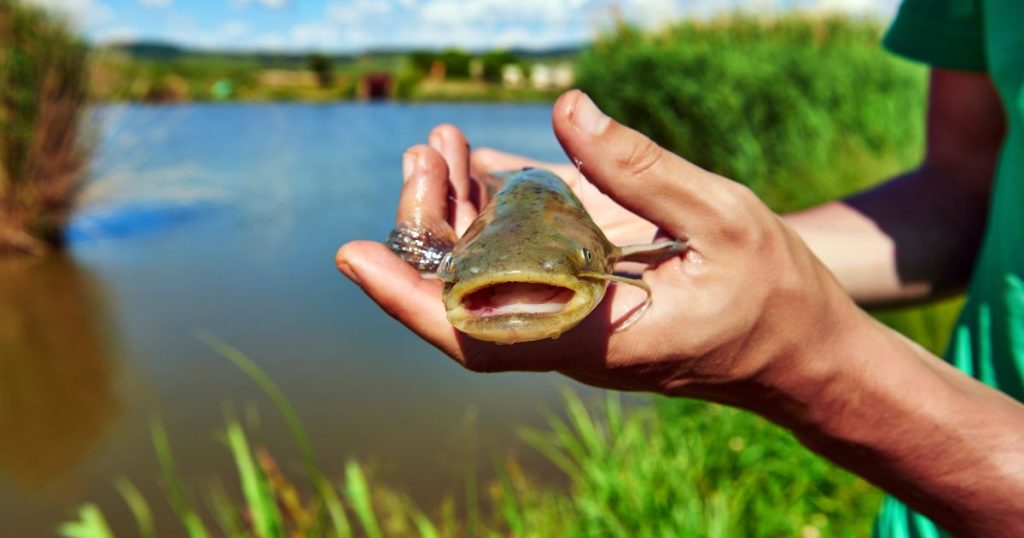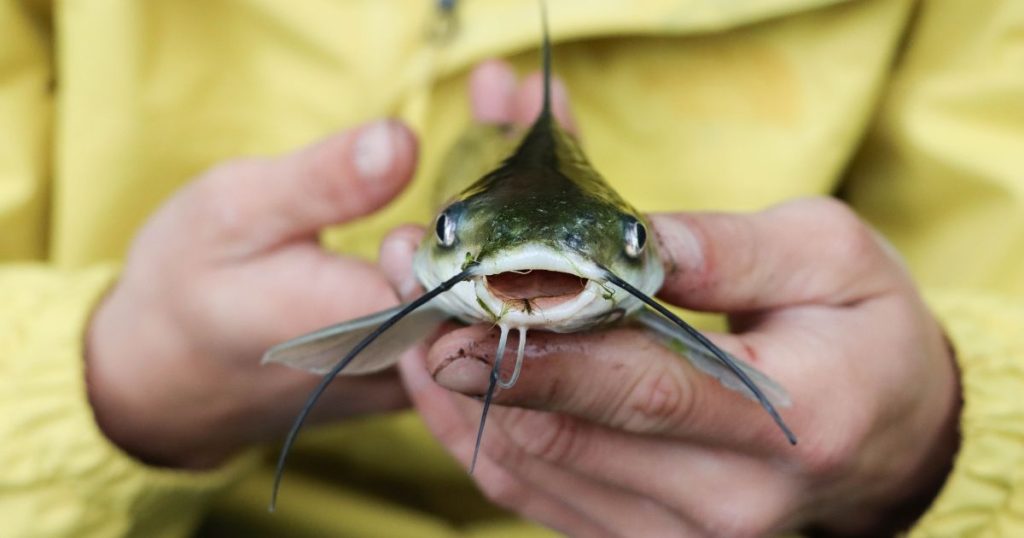Catfish are a wide range of unique species of fish set apart by their cat-like whiskers (barbells they are named after) and broad, flat faces. There are more than 3,000 different types of catfish species across the world, in over 35 different families!
Catfish are a popular choice for pets and often end up accompanying anglers home from fishing trips. A wide variety of sizes and colors can be found in fresh water, though a few families can also be discovered during saltwater fishing.
Let’s dive into habits and care, and find out how long catfish live.
How Long Do Catfish Live?

The length of a catfish’s life depends on a few things. Different species of catfish can live almost as long as you! The average lifespan of pet catfish can be anywhere from 8 – 20 years.
Corydoras may live for 10 years or more, and Synodontis catfish can live for 25 years.
Blue catfish live 9 – 10 years on average, whereas a Wels catfish can live up to 80 years! Channel catfish only live for around 6 – 7 years.
As you can see, the lifespan of catfish can vary according to the species, environmental conditions like water quality, and care provided.
Where to Find Catfish
Catfish can mostly be found in large bodies of water like lakes, rivers, and streams and are a dream to catch for freshwater fish enthusiasts.
Unlike fellow freshwater fish like the yellow perch, catfish prefer muddy waters to sift through for prey: they become an important part of the ecosystem as they sift through deep waters for waste.
However, once caught, catfish are often brought home. Here at The Coastal Side, we’ll teach you to do exactly that.
Keeping Catfish Alive
As a fishing enthusiast, it’s an exciting moment when you make a catch! Now, how do you store your catfish to ensure they survive the trip home? Unlike fishing for other freshwater fish like trout, you can afford to be a little laxer with your prep of catfish.
Catfish have an organ called a suprabranchial organ, a lung-like organ present above the arches of gills. This special organ has a paired chamber with many branches, helping catfish absorb enough oxygen from water to survive an extended period outside of it. This can be up to 18 hours max!
Catfish also have permeable skin, which allows them to absorb atmospheric oxygen and survive on dry land. These are resilient species that can survive droughts and cold water temperatures.
However, it is recommended you place your catfish in a cooler with plenty of water. Alternatively, you can also place it in a bucket of water for a short walk or drive home. Just ensure the bucket contains clean water.
Caring for Your Catfish

Catfish prefer a large, open space with warm water. The first step is choosing the right aquarium tank.
Tank Conditions
Ideally, your minimum tank size should depend on the species of catfish caught and an estimate of how large it will grow. Cory catfish are only about 4 inches long and can survive in 5 to 10-gallon tanks. However, some species, like the common pleco, can grow to be above 18 inches, and require much larger housing.
In either case, the ideal size for storing a catfish is a 20-gallon tank, but a 15-gallon tank or even a smaller 10-gallon tank may be sufficient for smaller species.
Catfish prefer clean, warm water so pay special attention to the tank’s hygiene. Install a filtration system to get rid of waste and maintain a healthy environment for your pet. This is vital to ensure your pet catfish doesn’t stress out since they are sensitive to poor water quality.
Also, make sure to add plenty of decoration, vegetation, and small nooks, since catfish are more comfortable when they have access to hiding spaces. There’s a reason they prefer muddy waters.
Feeding Your Catfish
Catfish can go a long time without food, however, when kept domestically, it’s ideal to feed them once a day. You can make your feed by combining healthy and natural materials like soybean meal, cottonseed meal, corn by-products, and wheat by-products.
A catfish will also appreciate aquatic plants and seeds, fish, mollusks, insects and their larvae, and crustaceans. Make sure to fill the tank with plenty of vegetation for both feeding and hiding purposes.
Housing Multiple Catfish
Catfish are omnivores, but some species can also be strictly carnivorous. Be aware that catfish can grow cannibalistic and eat each other in the tank if not provided with ample food sources. To prevent this, be mindful of your fish’s feeding time and habits.
Another reason catfish may become carnivorous is if they’re housed incompatibly. As catfish may not do well with certain types of fish and could display aggression, do research before grouping your catfish with another pet fish in your tank.
How to Prolong Your Catfish’s Life
Catfish are resilient creatures that can survive anywhere from 7 to 20 years. Clean water and ideal tank conditions are essential in ensuring they live that long!
Ensure tank cleanliness by keeping the water clean and well-oxygenated. In some cases, your catfish can keep its own tank clean by eating the dead algae.
Be mindful of the diet of your catfish, and keep an eye on their behavior. This can be done using a journal documenting their habits or changes in them every few weeks.
Summary
Fishing doesn’t just include hunting, but rather bringing a creature home as well! Catfish make for excellent pets, due to their survival skills and colorful nature.
We hope our guide has helped you better understand how long do catfish live and you’re now feeling well-equipped when it comes to caring for them at home.




